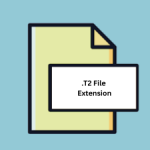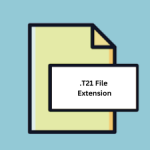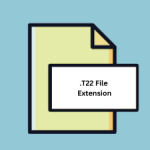.XYZV File Extension

Celestia Sampled Trajectory File
| Developer | Celestia Development Team |
| Popularity | |
| Category | Data Files |
| Format | .XYZV |
| Cross Platform | Update Soon |
What is an XYZV file?
The .XYZV file extension represents a Celestia Sampled Trajectory file, primarily used in the Celestia software for simulating space exploration and celestial bodies’ motion.
These files store sampled trajectory data, including positional coordinates (X, Y, Z), and velocity (V) information, allowing for the accurate representation of space missions, celestial orbits, and astronomical phenomena within the Celestia application.
More Information.
Celestia’s versatility and realism stem from its ability to incorporate real astronomical data and spacecraft trajectories. .XYZV files were introduced to facilitate the integration of sampled trajectory data into Celestia’s simulations.
Initially, these files were used to visualize historical space missions, such as planetary flybys, lunar landings, and interplanetary probes’ trajectories.
Over time, .XYZV files evolved to encompass a broader range of applications, including hypothetical mission scenarios, scientific visualization, and educational purposes.
Origin Of This File.
The genesis of .XYZV files can be traced back to the development of Celestia, an open-source, cross-platform space simulation software created by Chris Laurel.
Initially released in 2001, Celestia aimed to provide an immersive experience of the cosmos, allowing users to explore space, planets, moons, and other celestial objects in a three-dimensional environment.
The introduction of .XYZV files enriched Celestia’s capabilities, enabling the simulation of spacecraft trajectories and orbital mechanics with greater accuracy.
File Structure Technical Specification.
An .XYZV file follows a structured format designed to encapsulate trajectory data in a concise and readable manner.
Typically, each line in the file represents a single data point, containing the X, Y, Z coordinates, and velocity information.
The format may vary slightly depending on the specific requirements of the simulation or mission being represented.
The fundamental elements remain consistent, allowing for seamless integration into Celestia’s environment.
How to Convert the File?
Converting .XYZV files to other formats or vice versa may be necessary for compatibility or interoperability purposes.
While direct conversion tools are specifically tailored for .XYZV files may not be widely available, but several approaches can facilitate file conversion:
- Scripting: Writing custom scripts or programs to parse .XYZV files and generates data in alternative formats such as CSV (Comma-Separated Values) or JSON (JavaScript Object Notation).
- Third-party Software: Leveraging third-party conversion software capable of handling trajectory data in various formats, allowing for indirect conversion between .XYZV and other file types.
- Manual Conversion: In some cases, manually transcribing or reformatting trajectory data from .XYZV files into desired formats may be feasible, albeit time-consuming.
Advantages And Disadvantages.
Advantages:
- Accuracy: .XYZV files enable precise representation of spacecraft trajectories and celestial motion, enhancing the realism of simulations.
- Versatility: These files support a wide range of applications, from historical mission playback to hypothetical scenario analysis.
- Interoperability: Celestia’s compatibility with .XYZV files ensures seamless integration with other astronomical datasets and simulation environments.
Disadvantages:
- Complexity: Creating .XYZV files requires meticulous data collection and formatting, particularly for missions involving complex trajectories or multiple spacecraft.
- File Size: Large-scale simulations or missions with high-frequency sampling can result in sizable .XYZV files, potentially impacting storage and processing resources.
- Limited Interactivity: While .XYZV files provide accurate trajectory data, they do not inherently support interactive elements or real-time adjustments within Celestia’s simulation environment.
How to Open XYZV?
Open In Windows
- Download Celestia for Windows from the official website or trusted software repositories.
- Install the application by following the on-screen instructions.
- Launch Celestia and use the file menu to open the .XYZV file or drag and drop it into the Celestia window.
Open In Linux
- Install Celestia from your distribution’s software repository using the package manager or download the source code and compile it.
- Launch Celestia from the applications menu or terminal.
- Load the .XYZV file through the file menu or by dragging and dropping it into the Celestia window.
Open In MAC
- Download the macOS version of Celestia from the official website or trusted sources.
- Follow the installation instructions and launch Celestia.
- Use the file menu to open the .XYZV file or drag and drop it into the Celestia window.













